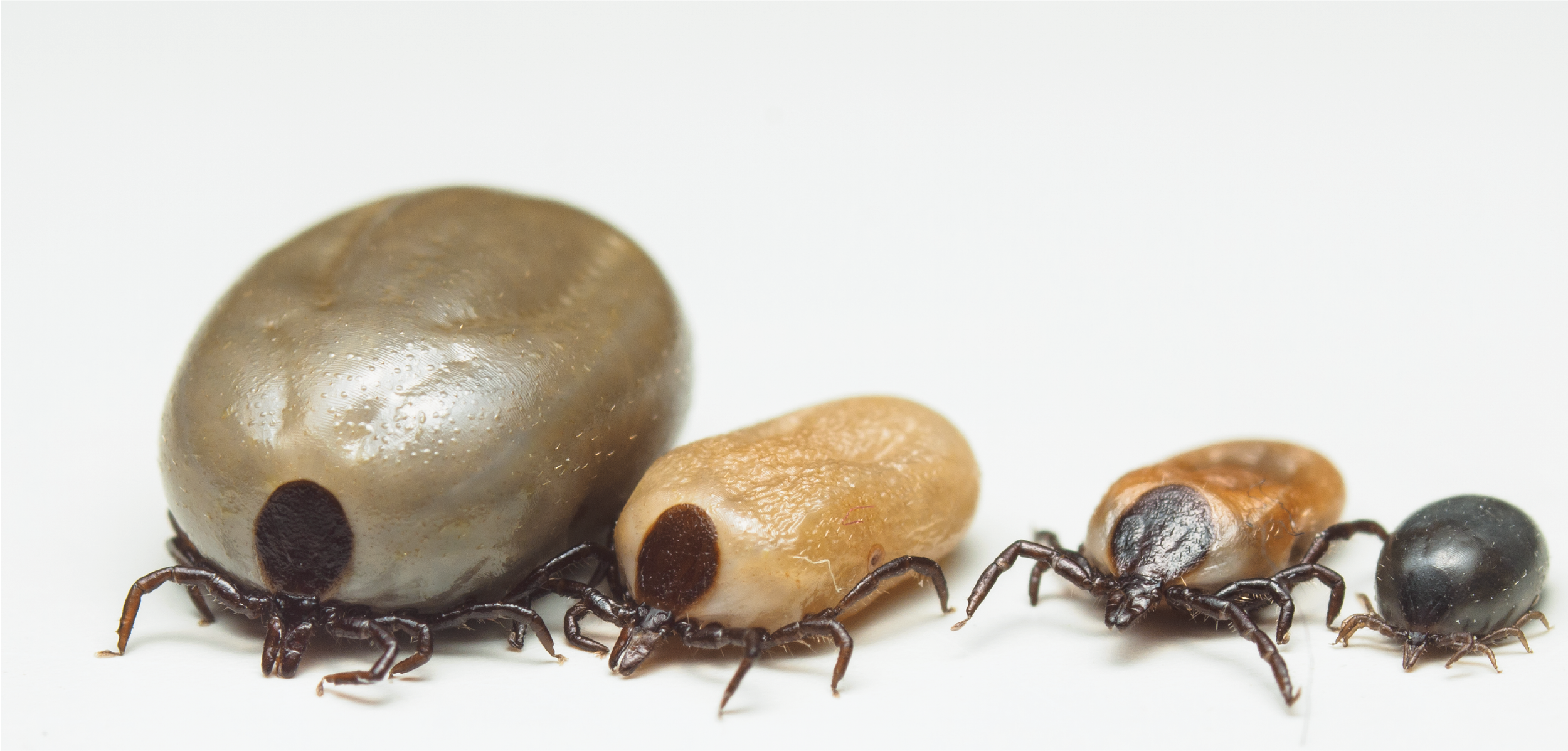
Understanding Tick-borne Agents of Disease
Arthropod vectors such as ticks, fleas, flies, and mosquitos transmit over 100 different agents of human and animal disease (pathogens).
Together, they account for nearly one-sixth of all infectious diseases worldwide.
Our mission is to determine where these disease agents circulate (distribution) and how they change in response to environmental pressures (evolution), in order to design more effective diagnostics and therapies (intervention).
Distribution
Tick-borne pathogens persist within a series of interlocked biological cycles, often moving between several host animal species. Understanding these complex dynamics relies upon rigorous testing and tracing. As part of our VIDPro, we partner with local and regional affiliates to collect tick and pathogen distribution data. We can integrate these data together with disease occurrence and animal surveys to predict the spread of tick-borne diseases.
Evolution
Genome reduction - the evolutionary loss of significant metabolic capabilities - is a hallmark of certain tick-borne pathogens and parasites such as Rickettsia, Anaplasma, Orientia, and Wolbachia. Instead these microbes rely on their host to provide essential nutrients and cofactors. Other metabolic functions can be acquired by these microbes via lateral gene transfer. We study the role of both mechanisms in tick-microbe, and microbe-microbe interactions.
Intervention
Tick-pathogen interactions that are critical for pathogen survival - such as essential nutrient exchange - provide a rich landscape for the design of novel interventions, including vaccines and therapeutics. In addition, functions acquired via lateral transfer represent potential new vehicles for biocontrol mechanisms, including bacteriophage-mediated elements, integrative-conjugative elements (RAGEs), and more.



